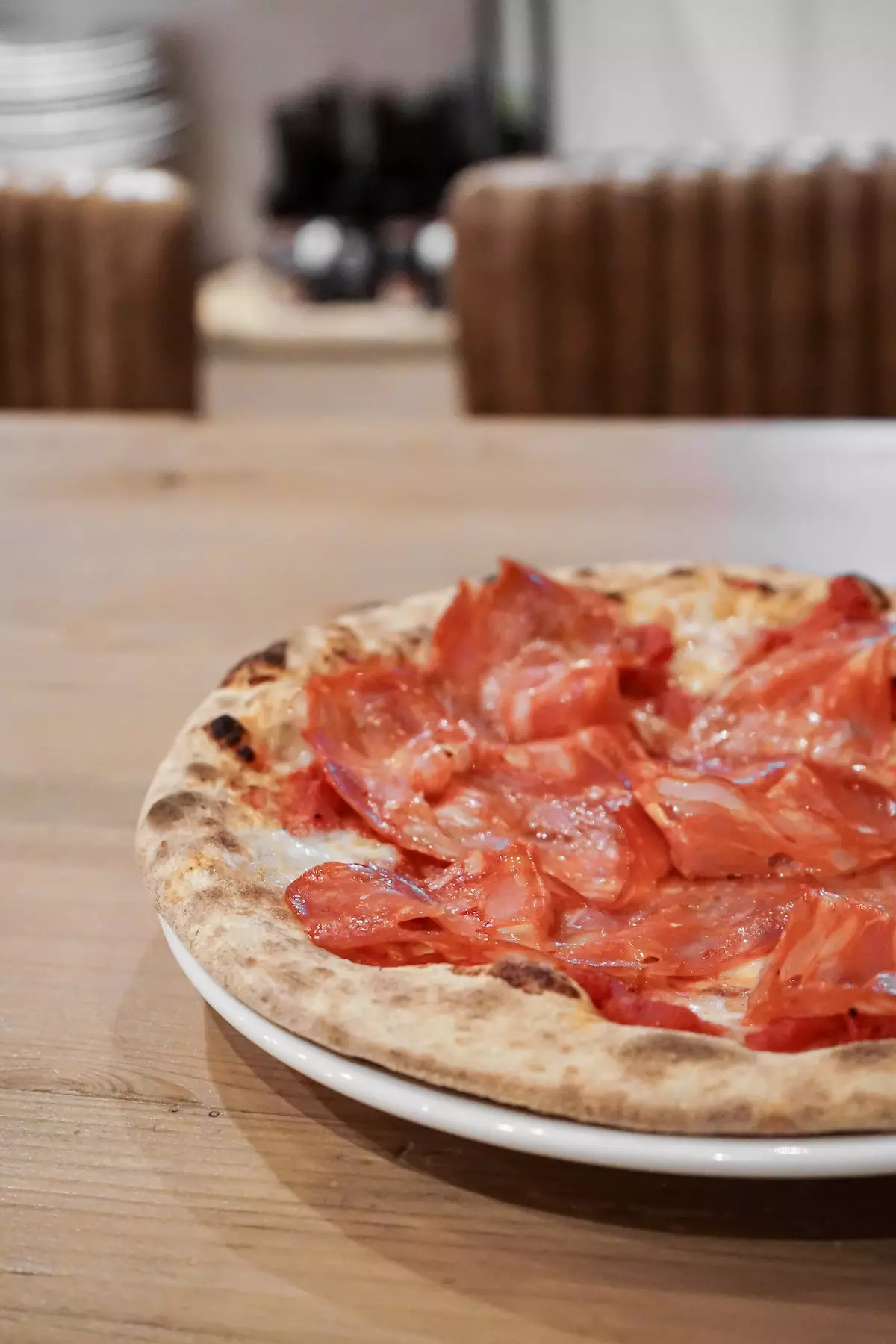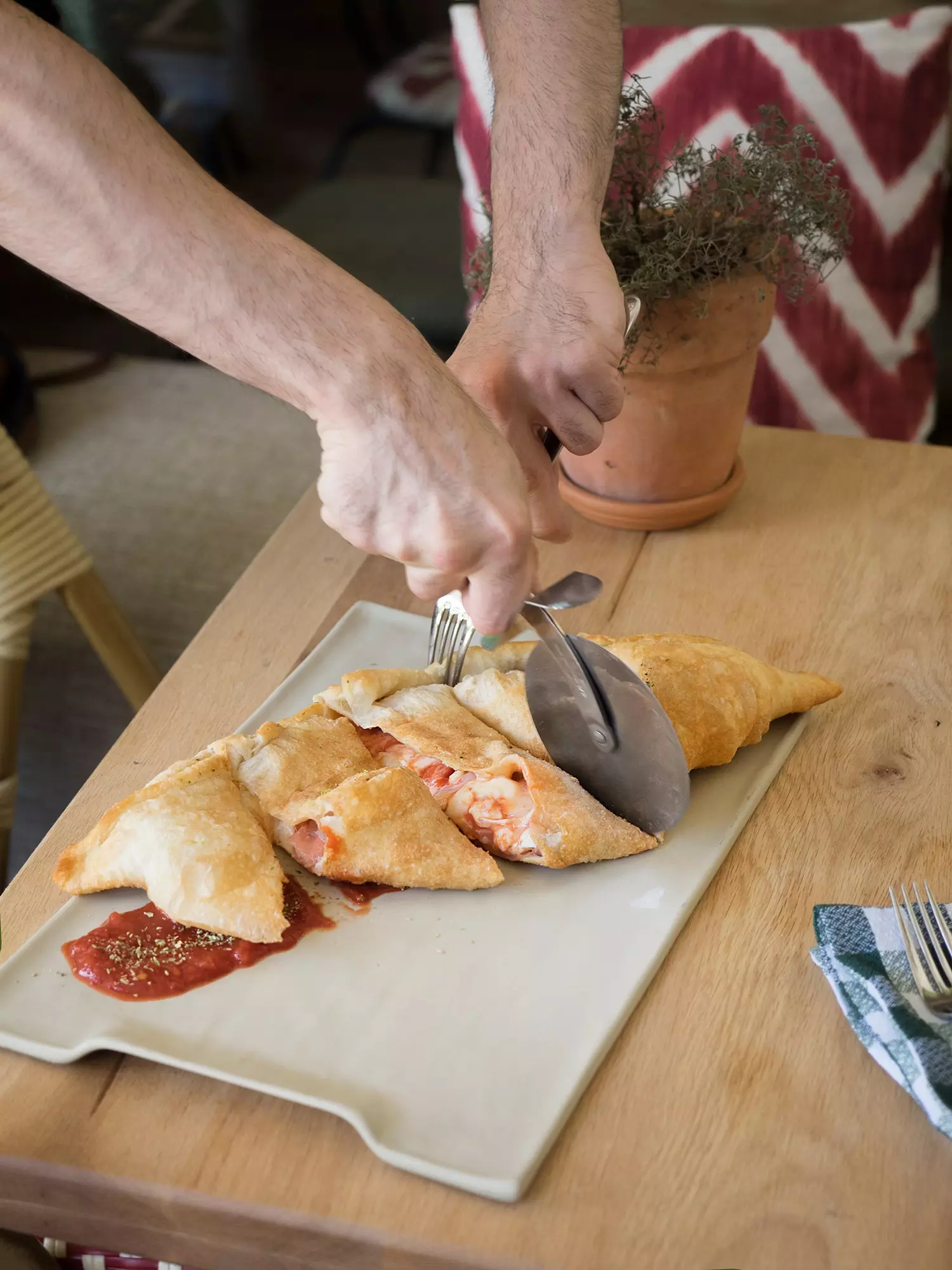
Araldo's pizzas are not Italian or Madrid: they are from another planet
when we think of Italian cuisine pasta and pizza come to mind, and rightly so, since they are the basis of the transalpine gastronomy.
Like any famous dish worth its salt, there are several false myths around them . We point out the three most notable ones and what is more important, we reveal three restaurants in Madrid where you can demolish these false myths.
THE TRUE ITALIAN PIZZA IS THE NEAPOLITAN PIZZA
Fake. The Neapolitan pizza It is the most famous in the world and has even achieved the title of Intangible Asset of Humanity by UNESCO, but in Italy there are many varieties of pizzas , depending on the geographical location (North or South) or the regions, and all are worth tasting.
Since a couple of months in Araldo Madrid **(Calle de los Madrazo, 5) ** it is possible to savor the traditional Veronese recipe pizza: handmade and light, soft on the inside and crispy on the outside. They make it with biological semi-integral stone-ground flour (obtained from a non-genetically modified wheat, free of harmful chemicals) and mother dough with rest of at least 60 hours -at controlled temperature and humidity-.
In addition, the tomato sauce, made with the San Marzano PDO tomatoes , is prepared with the 'confit method', that is, it is cooked for a long time at a low temperature so that the tomatoes release all the water and the sauce is as dense as possible.
Two essential varieties to appreciate the different flavor of the sauce are the San Marzano (San Marzano tomato confit, Fiordilatte cheese, black olives, Grana Padano cheese aged for 24 months, fresh basil emulsion) and the Saint Giacomo (San Marzano tomato confit, Grana Padano cheese aged for 24 months, burrata cheese, semi-dried red and yellow tomatoes) .

This Araldo pizza is HAPPINESS
THE QUEEN OF NEAPOLITAN STREET FOOD IS PIZZA
Half false. What is eaten the most in the streets of Naples is not the classic Neapolitan pizza, but the fried pizza.
This variety, very similar to calzone, was born as an alternative to the classic version in a wood-fired oven after the Second World War , since even pizza had become a luxury good, due to the high cost of ingredients.
In those days it was prepared with very poor fillings, such as ricotta, strips of pork and pepper, and it was quite common to cook it at home and share it among neighbors – today some women from the most popular neighborhoods still make them and sell them to passers-by -. In addition, the method of oggi to otto pizza : 'you eat it today and you pay for it in eight days', for those who could not pay the amount at the time.
The fritta pizza dough is the same, the only difference is that it is fried and the ingredients go inside it, not on top. One of the few places in Madrid where we can try it is Giulietta (Manuel de Rodrigo Square, 7), the new Italian of the Le Cocó group.
You can choose the fried pizza with speck and gorgonzola wave fried pizza with mozzarella, tomato and basil. The giant still lifes with peperoncino, garlic and dried tomato, pumpkins, ears of corn, oranges, lemons, and thyme will do the rest for you to dream, even for a moment, of being on a street in Naples...

Giulietta Fritta Pizza
PASTA: THE MORE INGREDIENTS, THE BETTER
Fake. One of the secrets of Italian cuisine is simplicity, and with pasta, the undisputed queen of our gastronomy, this concept is fulfilled to the letter. The carbonara, aglio oil and pepperoncino wave cacio e pepe s in fact, some very simple recipes and at the same time, very good and famous all over the world.
The cacio e pepe , for instance, It only consists of two ingredients, but if it is well executed, we will not miss any stuffed pasta or more elaborate sauces.
It belongs to the current of Roman cuisine called "burina" (shoulder) , linked to the rustic and popular aspect of many of its dishes and to the genuine ingredients coming largely from the orchards and pastures of the Roman countryside. And it owes its fame to the excellent sheep cheeses that are produced throughout the Lazio region.
One of the places in Madrid where they prepare one of 10 is Casa Bianco _(Stone Staircase Street, 2) _, a few meters from the Plaza Mayor, under the Arco de Cuchilleros, run by the Roman chef Massimo and his Croatian wife Vesna.
